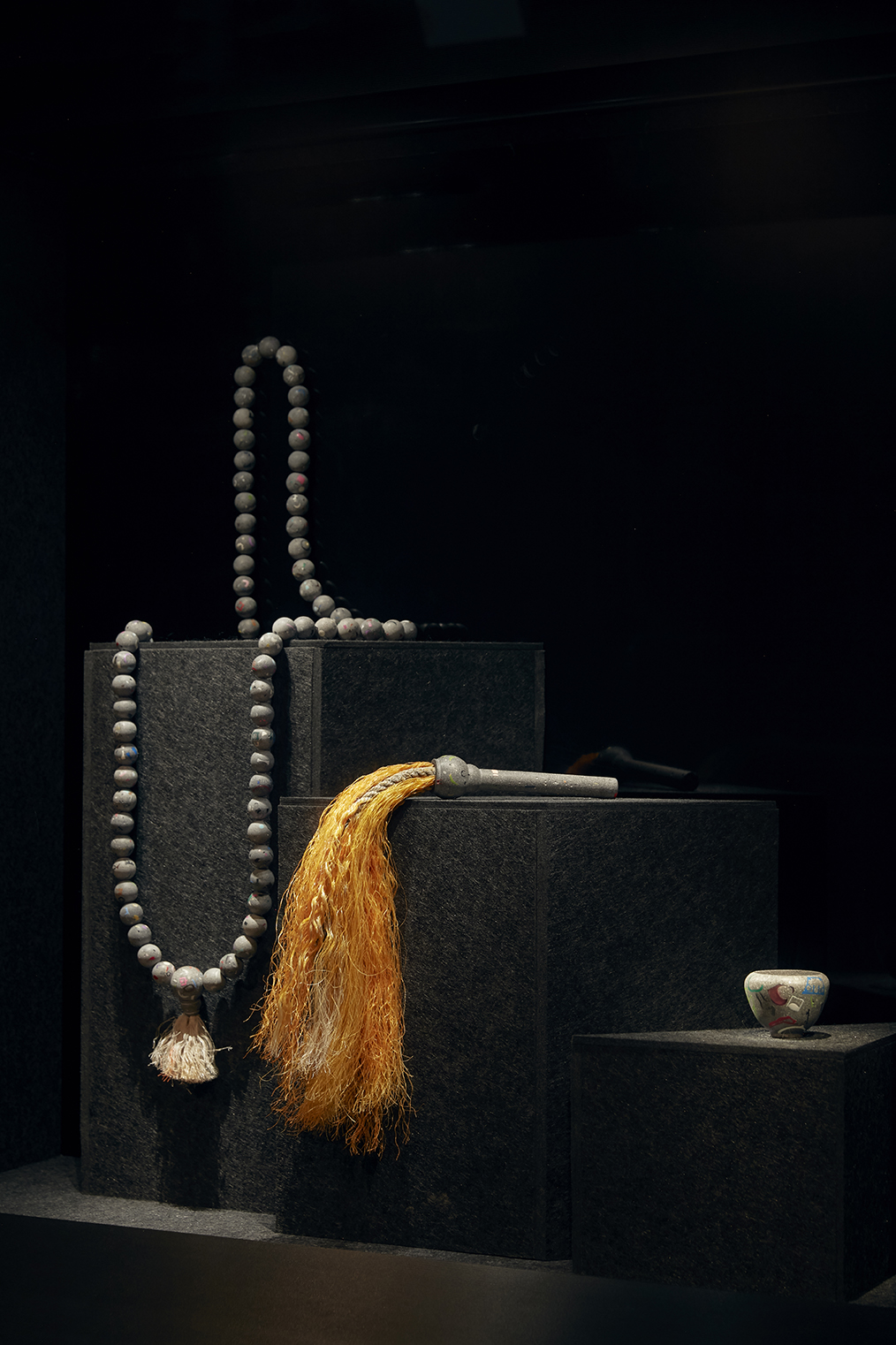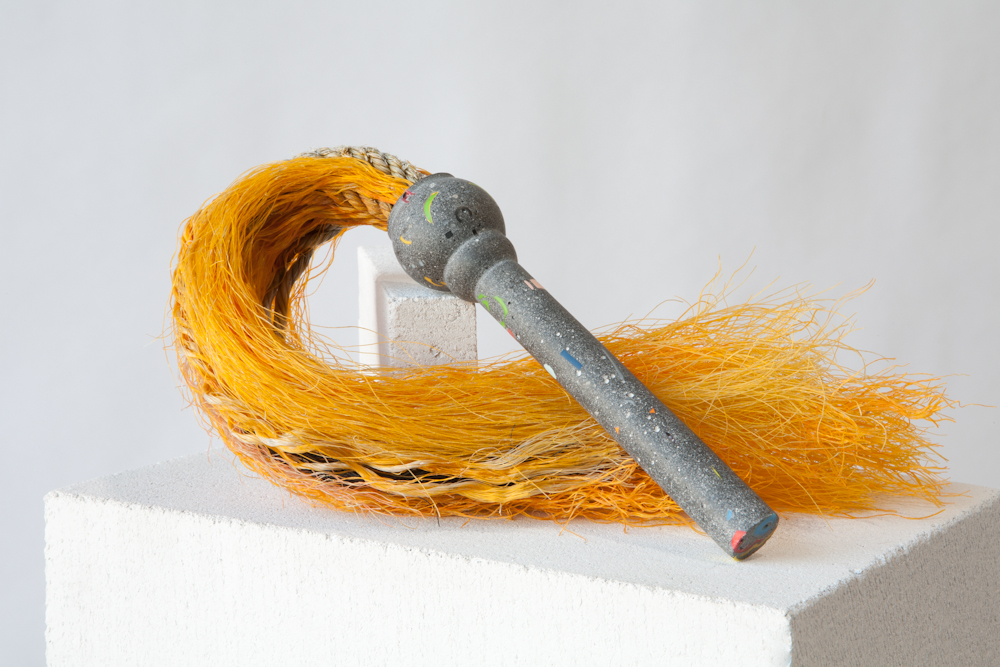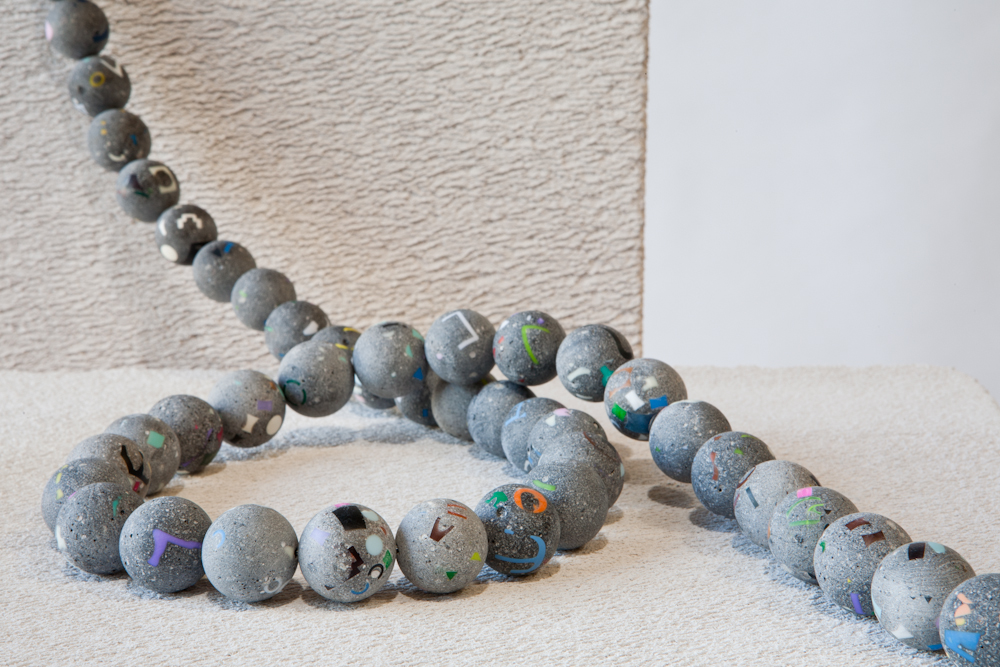Ritual Objects for the Time of Fossil Capital
During Melbourne Design Week 2018, my collaborator Kyoko Hashimoto and I presented our work Ritual Objects for the Time of Fossil Capital at Artefacts, curated by Jonathan Ben-Tovim, Makiko Ryujin and Michael Gittings.
Working the waste materials of our children, their broken toys, and appropriating the typologies of Japanese Buddhist objects helped us consider some new ways to think about old problems becoming increasingly urgent.
We were lucky to see this acquired by the National Gallery of Victoria (NGV) for their permanent collection. Most recently it is on display at past of their exhibition Designing Woman, illustrated on their website as a key work. This is the third acquisition of our collaborative work by the NGV, after Terra Rings and One White Cube.
Full text:
The issue of materials and how they are made and transported demands attention as the most pressing socio-environmental problem of our time. Consider the role of fossil fuels in the production of plastic: they are extracted from the ground to create plastic polymer feedstock, but also power their own transport around the world. From crude oil in Iran, to petrochemical in Japan, to injection moulding pellet in China, to plastic toys in Australia, creating climate change emissions, pollution and waste at every stage of the process. The infiltration of plastic waste into the ocean is particularly dire, potentially leading to mass extinction through effect on ocean animal ecologies.
Concrete, the other main material in these works, is equally problematic. It is the material most widely used by humans after water, and the fourth largest emitter of greenhouse gases. It is commonly used in building with mild steel reinforcement that reduces its service life from centuries to decades.
The thinking that underlies these waste-based systems of production is short-term. It feels eschatological, as if we are unavoidably headed towards a dark, cruel cataclysm. Perhaps this is a consequence of Western-centric development and the influence of Christian concepts: of end-times and a short, violent history of the earth. We wish to challenge this kind of thinking through the re-design of Buddhist ritual objects from Japan – objects developed from a fundamentally different and much longer conception of time, being and world.
Drawing our fears together in the collection of our own domestic waste, our ritual objects are made from concrete and pieces of plastic toys used, broken and discarded by our children.
Hossu are used to brush away insects from chairs and seating surfaces, so as to avoid the unnecessary death of living beings. The brush fibres are made from the sun-faded remnants of polymer nets we found at the Sydney Fish Markets.
Hohatsu are the bowls monks use to beg for food and alms. For Buddhists, they signify non-attachment to material possessions.
Juzu are the Japanese form of Buddhist prayer beads. Traditionally made from wood, semi-precious stone or ivory, the soft grinding noise that results from the manipulation of the 108 beads in the hand is said to focus the mind on the weaknesses of human attachments and passions. Its traditional tassel is made, like the brush of the hossu, from the unravelled fibres of a discarded fishing net.



